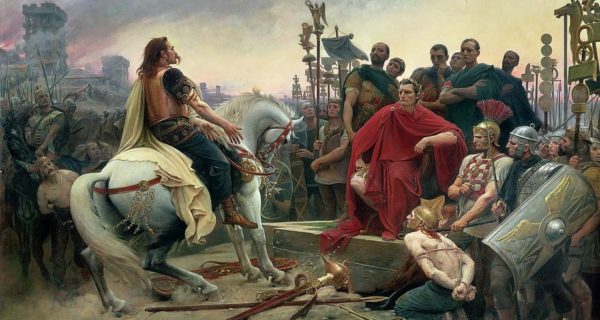The Celts: a mysterious and misunderstood culture, whose myths and magic continue to affect us even today, thousands of years after the Greeks first spoke of the blue-painted Keltoi. Who were they, really? As a member of the Celtic diaspora, who has done a lot of research on the subject, I have taken it upon myself to dispel some misconceptions about who the Celts were, and who they are now.
The Ancient Celtic peoples didn’t really think of themselves as having a collective identity; they were tribalists. Furthermore, modern genetics have shown that the Celtic nations came from a number of different lineages; there was no real “Celtic Race”. That was an invention of 19th century race theory. However, they were bonded by a shared language and culture. They worshipped the same gods and had similar way of life. They eventually began to refer to themselves as Gaels, or Gauls. They even have a book of the Bible dedicated to them: St. Paul’s Epistle to the Galatians.
G.K. Chesterton wrote in his epic poem The Ballad of the White Horse, “The great Gaels of Ireland are the men that God made mad, for all their wars are merry and all their songs are sad”. Above all, the Celts were a fiercely independent warrior culture. It took the Romans generations to suppress them, and even then, there were those who would not be cowed. Hadrian’s Wall was built specifically to keep the Gaelic tribes out. It was for this same reason that Spanish Celts were used as mercenaries by the Carthaginians in the Punic Wars; a decision that they came to regret when Carthage couldn’t afford to pay them.
Indeed, warfare was a favorite activity of the Celtic tribes. The Celtic sword was an efficient weapon, and so well designed that the Romans adopted it as the official sword of their legionnaires. In terms of the number of fatalities, the Celtic sword is probably the deadliest weapon in history prior to the invention of firearms.
The Celtic tribes dominated Europe for millennia. Though we commonly associate them with the British Isles, Britain was an “outpost”. The seat of Celtic culture was in what is now France and Spain. They created art, music, epic poetry, and complex myths. They farmed sheep, cattle, grain, fruits and vegetables. Horses were revered as sacred, and pigs were the food of the gods. They worshipped a pantheon of nature deities that controlled the weather, the crops, and cycle of the seasons. Much of Celtic life was devoted to appeasing these deities. Sometimes, it included human sacrifice.
When the Celts took up Christianity, they were among the most faithful in the West. Indeed, it was probably Celtic piety that got Europe through the Dark Ages. Celtic monks in Britain and Ireland tirelessly copied down the Holy Scriptures and other old and valuable books that otherwise would’ve been lost. Indeed, one could say that they were as fierce in their service to Christendom as they were in battle.
So where are they now? The Celts were eventually pushed out of central Europe, as waves of Germanic and Slavic tribes invaded and occupied the land which was once theirs. The Romans pushed up from the south, and eventually conquered and Romanized many of them. Some Celtic languages, like Galician, died out entirely.
But they survived on the fringes of Europe, in Ireland, Scotland, Wales, Cornwall, and Bretagne. Through persecution, and invasion, they prevailed. Their culture and spirit, though fractured and suppressed, lived on and continues to live. Celtic music is more popular now than ever, and is still evolving, informing modern music styles, like rock, country and metal. Celtic myth provides inspiration to modern fantasy authors, TV and movie writers and comic artists and writers like myself.
The Celts have left an indelible mark on Western Civilization. Their art and music will continue to affect us for generations to come. So in a sense, the Celts will never die.
